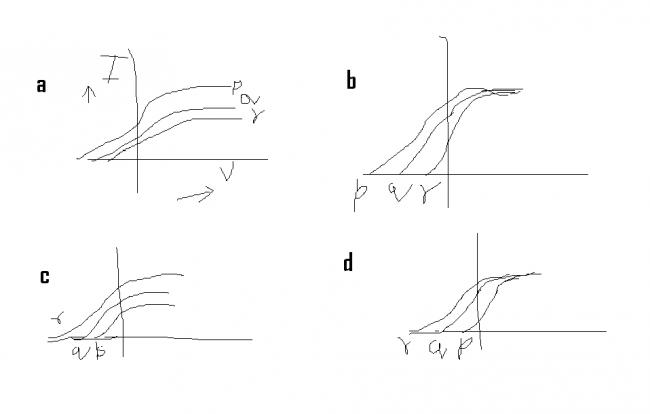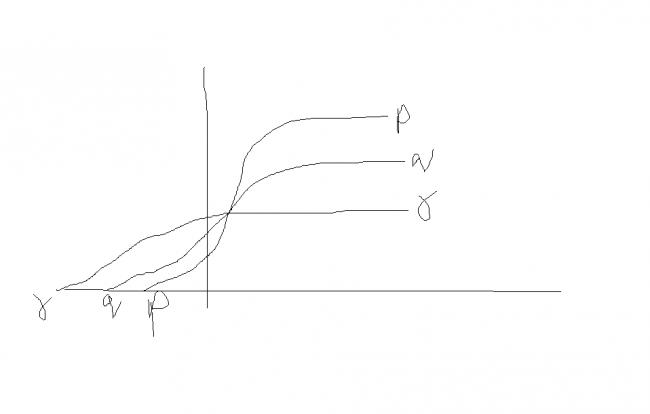fiitjee and reso gave ans as a)...
I however marked d in the OMR..[2]
 question of paper-2 jee-09
question of paper-2 jee-09
Photoelectric effect experiments are performed using three different metal plates p, q and r having work functions
φp = 2.0 eV, φq = 2.5 eV and φr = 3.0 eV, respectively. A light beam containing wavelengths of 550 nm, 450 nm and 350 nm
with equal intensities illuminates each of the plates. The correct I-V graph for the experiment is [Take hc = 1240 eV nm]
i think its answer would a & d both
-
UP 0 DOWN 0 0 12

12 Answers
i gave d as well!!
Saturation current depends only on intensity
also the threshold frequencies are correctly marked as well
 i too marked d but the actuall graph is like
i too marked d but the actuall graph is like
in fiitjee,bansal, brilliant ,.. others sol. they have only consider intensity but not the work function if we consider work function only then( a ) is purely wrong
i too marked d and thought this q wrong
but then after some thought convinced ans is a only
see brilliants sol
wat I and u ve probably assumed wrongly is that light of 550 ,450 ,350 nm falss on p q r respectively
but see carefully , question doesnt say so
it says a light beam ie all these 3 fall on p ,q,r
moreover as workfunc of p is less all three beams give photoelectric effect
while in q only 2 and in r only 1 hence intensity p>q>r
i do agree but when we cut on the x axis then cutting of p will be less -ve and of r is more -ve which is not in a
this is indeed a question of doubt ...
well ere is my approach
to every plate you are bombarding all the three wavelengths
energy of tghe three wave lengths -
1240/550 ,1240/450,1240/350= 2.25 , 2.75 and 3.54
see that for the first plate ..
all the wave legnths will contribute to current
for the second plate only the last two
for the third plate onyl the last
so the amount of escaped electrons contributing to current will wbe highest in first and decreasing ..
give ur thinking rahul and compare it with post#5
theres no dbt a is correct
obviously a is rite
first let the no of photelectrons due to each wavelegnth be constant and equal to x
so if the enrgy of each photelectorns exceed the work function then light will be produced
in plate p photelectrons emitted is 3x and the stopping potential is the maximum as k.e. is maximum this is as work function is minimum
u can apply the same argumens for the other plates